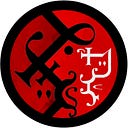Melchior’s Grand Tour: The Pilgrim’s Tunnels [4]
The first day of traveling into the tunnels was surprisingly pleasant. At first, at least.While the summer sun raged outside, the tunnels were cool and humid. It felt like in an enormous wine cellar, not scary, familiar even.
The first league undergrounds are paved with stones: these caves are a place of pilgrimage, and the first section is still commonly used, even if far less than in the past.
There are three grotto-chapels along the tunnels, but these days people only reach the first one, which takes three hours to get there. They will get there and come back in a day, without a hurry.
The pious pilgrims reach the third chapel, which takes a full day, and they camp there, spending the night in the tunnels. Sister Jubix explained this to us sighing: once the pilgrims that traveled to the third grotto were dozen a month, now are a handful a year. She seemed almost ashamed of the condition of the tunnels, as we entered her room before she could clean it up.
The head group kept gaining distance from us until we lost sight of them. As the group with Dwarf Leader went farther, Omar (the interpreter) became chattier, asking more and more questions to the nun and me.
He asks about our religion and the Saint to which the caves are dedicated. Sister Jezib, happy to play guide, told the story of Saint Gugonix, pointing to the frescoes of the first chapel.
She was one of the four Tartarus jailers, tasked to guard the most dangerous damned: giants, dragons, angels. The cyclops broke free, strong enough to smash the adamantine chains and able to see through the ever-changing tunnels of that hell. In their escape, they maimed Gogunix, ripping off her wing. Even if broken, Gugonix was able to bring back to their jail the cyclops, becoming a symbol of perseverance and dedication to one’s job.
Sister Jezib was very theatrical explaining the paintings and, eventually, Zair (the alchemist) and Amim (the guard) wanted to listen in, so the interpreter did his best to translate back and forth.
The frescoes of the first chapel were of many different centuries and styles, beautiful but cracked and crumbling: the convent has no money to fight the decay or hire new artists to cover the lost paintings.
From there, the path became bumpier. The cart with the traveling lab started rattling and clinking, and the guard begrudgingly pulled it over the holes and the moved slabs.
On the niches and crannies of the tunnels more and more were mushroom grew. There was nothing rotten to feed the fungi, but they were thriving. The fauna became gradually weirder: the banal centipedes left way to more exotic species; wingless bats crawled on the wall, albino flies flew from mushroom to mushrooms like bees would with flowers.
Every few minutes, the alchemist asked us to stop, opened his lab, and did a quick analysis of an insect or a fungus. He put the specimen in alembic and vase filled with chemicals, observing the changing colors of the reactions.
We passed the second chapel, the one dedicated to the sacrifice of Gugonix and the other three jailers who give their life so Mammon could create the Onyx Moon, where all the nightmares and horrors reside.
The grotto had the ceiling covered in sleeping noctules and there were large formations of black musks and mushroom formations, all dutifully sampled and analyzed by Zair.
Omar was really in the mood for conversation: he told us that their mission was to find saltpeter or analogous compounds. Their idea is that guano and other by-products of caves’ life may have created deposits to be mined. But Zair has a theory: the fungi may be extracting the nitrate as part of their life cycle, and this will mean that saltpeter could be farmed and harvested instead of being dug out and purified.
The Hifar Company, a mining company, wants to jump into the firearms business. The key is to find a way to produce black powder in large quantities for cheap. The dwarven nitrate deposits are few and small, in the hands of old families that don’t see their potential. Lady Hifar, the ruler of the company (and a relative of all the dwarves present), has some bold and innovative ideas on mass-producing guns and cannons: selling them to their new allies, the Holy Infernal Empire, would mean riches and power beyond imagination.
Amim, the guard, must have understood Omar was blabbing too much about the company’s affair and pulled back the interpreter a few times to speak to him, after which he was much vaguer in his tellings.
In the evening, we arrived at the third grotto-chapel. The walk was tiring, and the air became dense and oppressive. The temperature started rising, and we were all sweating.
There we met the head group: the leader scolded his companion that traveled with us, they were too slow!
While Jezib, Aminta the ranger, and I were praying at the statue of Gugonix Victorius, leaving our handprint in blood as a testament of our pilgrimage, we could see the dwarves discussing louder and louder.
After this point, there are no maps, nor there could be: Tartarus is still moving and changing, even if stranded in the Material World. The changes in the tunnel layout are slow but become faster and faster as one goes deep.
The head group has found two possible paths, both of which will need the use of explosives and the rhino-drill to open. The dwarven group can’t seem to decide and asked us for an opinion.
We could go into a DESCENDING PATH, from which they see a light and perceived green mana, associated with vitality and life.
We could go into a STRAIGHT TUNNEL, from which they have heard sounds and perceived azure mana, associated with space itself.
